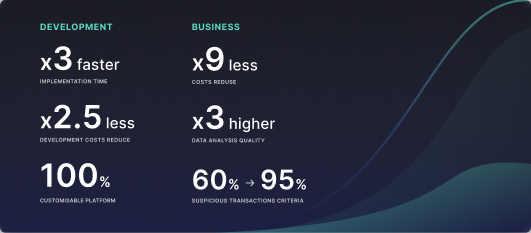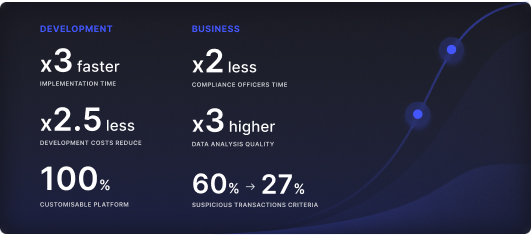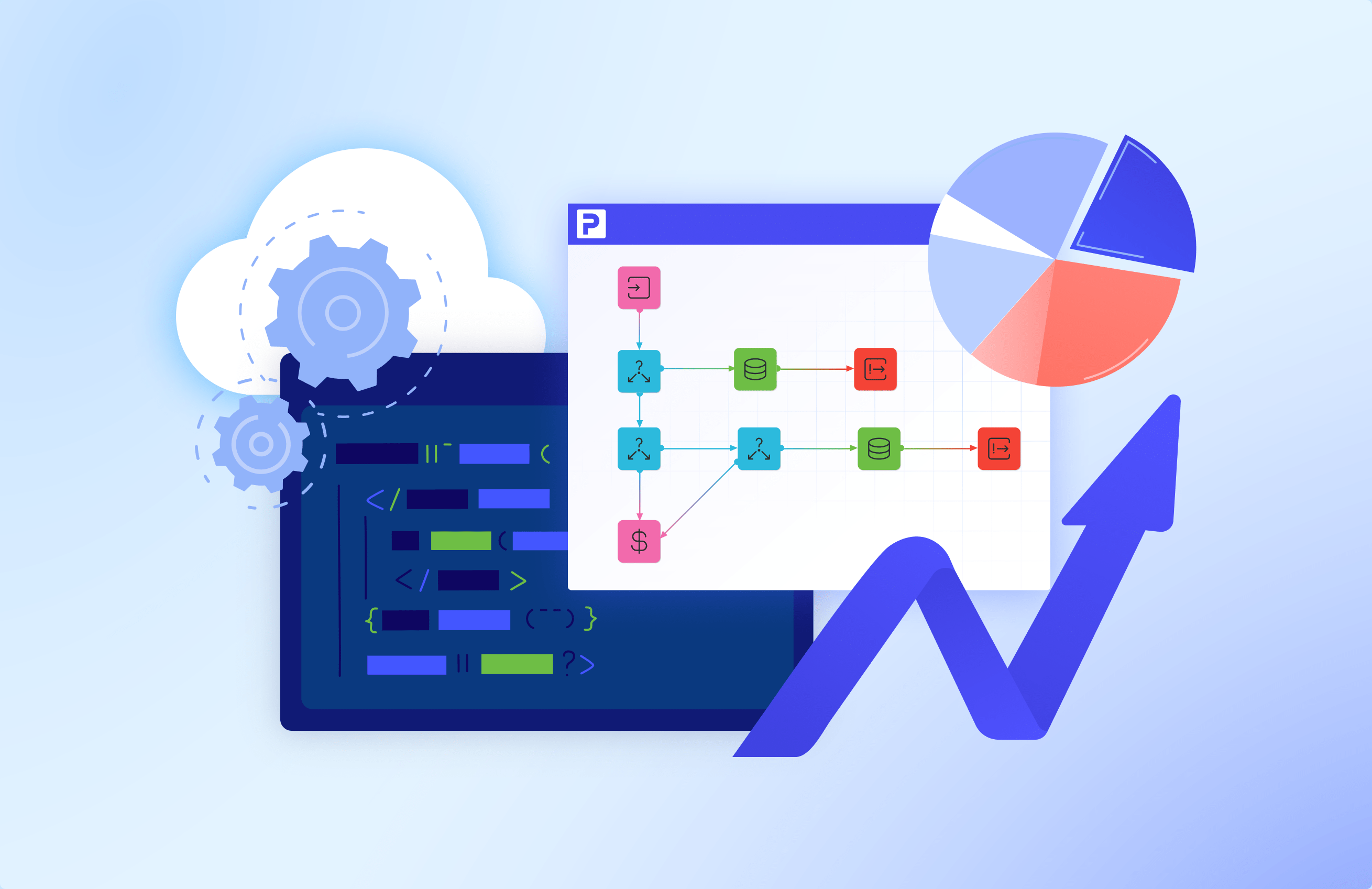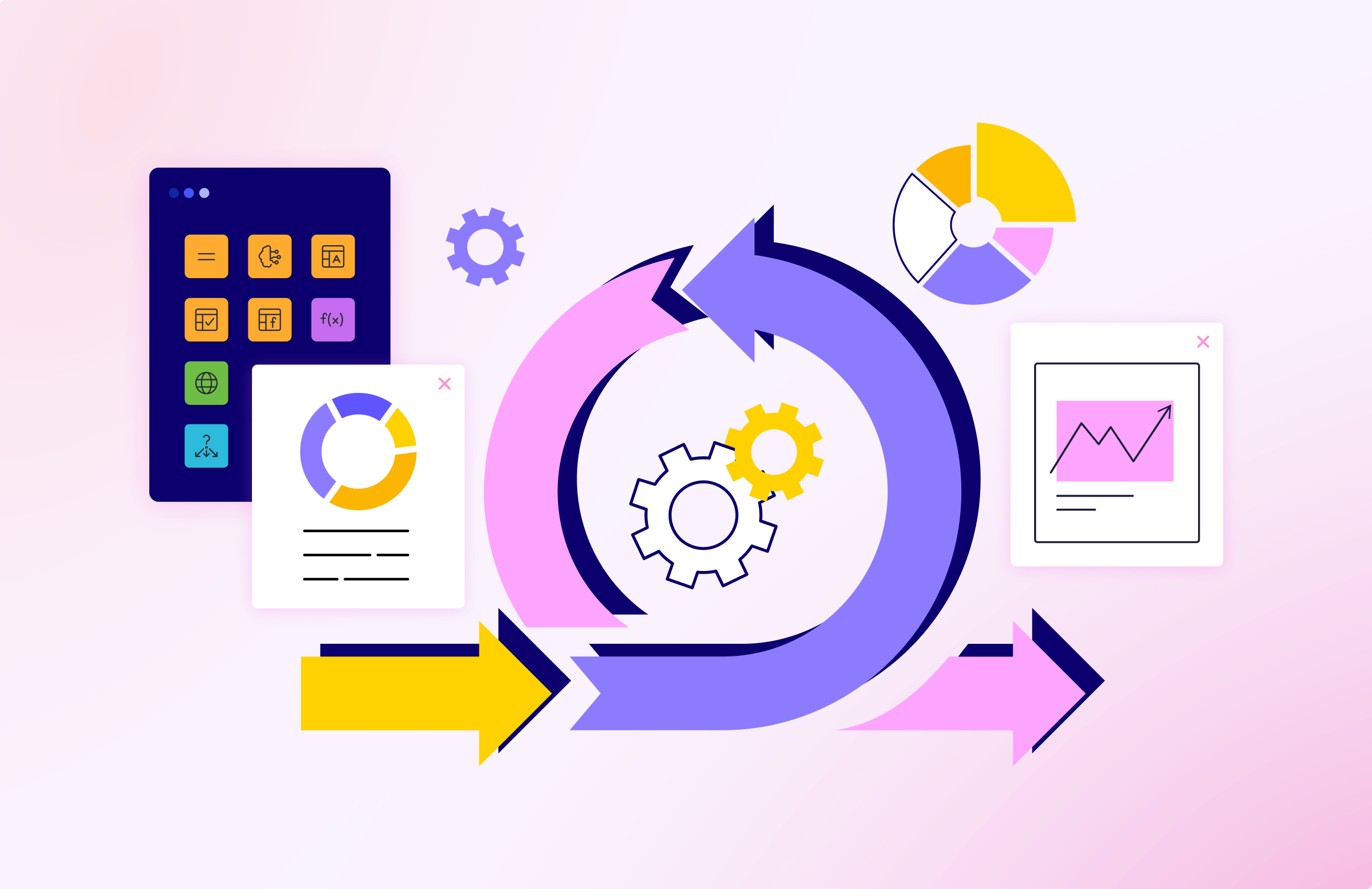5 steps for an efficient process automation


Process automation is one of the most important parts of any business. Since the dawn of time, entrepreneurs have strived to facilitate their business processes. At first, there were tools operated engaged manually. Then, with the first industrial revolution, came the machines. TAnd today, we have the latest computing technologies that make process automation even more effective.
Usually, software-driven process automation falls under two categories — RPA (Robotic process automation) and ERP systems. Robotic Process Automation is the technology that employs macros or software bots to automate a consequence of actions comprising a single task. RPA is a great way to replace human effort when it comes to simple repetitive tasks. At the same time, this type of automation has certain restrictions on the actions it can handle.
ERP systems, in turn, automate the tasks related to accounting material management, and others. ERPs have been around much longer than RPA technologies and have been used by enterprises for decades. However, using ERP systems involves substantial financial resources for IT support and long learning courses for the staff.
In the course of the last several years and, especially, this year, low-code and no-code process automation are gaining popularity.
What processes to automate?
The processes that suit digital automation often have to do with subsidiary processes like emails, data management, checklists, etc. In general, the processes that you can automate with a digital system are of repetitive nature. They should be quite predictable so that you could create an algorithm that can fulfill these actions the right way. Processes that businesses can automate take place in HR, IT, risk management, legal, customer service, and other departments that deal with large volumes of data or have long checklists to follow.
The algorithms for process automation can be either simple or complex depending on the tools you use (e.g., advanced low-code platforms allow to the creation of process automation protocols with multiple variables and steps).
Low-code platforms for business process automation
Low-code process automation works for many industries including manufacturing, banking, e-commerce, healthcare, education, and many others. According to Forrester, multiple enterprises managed to increase their ROI up to 500% over 4 years of using low-code platforms for their process automation. The same study says that 84% of interrogated managers used low-code platforms to deliver the software — at least partially.

Businesses turn to low-code for several reasons:
- Lower development costs: low-code platforms decrease access threshold to software development for citizen developers and ease up the process for professionals. Low-code platform subscription payment is many time lower than development team hiring and salaries.
- Faster process automation app development: Visual development features along with low-code platforms’ IDE for robust custom coding give a 3x boost to the app delivery process.
- Easy integration and deployment: low-code automatization software is easy to incorporate with business systems and processes owing to low-code pre-made connectors for databases, APIs, and other core business software. In addition, low-code apps can be deployed with a click and start bringing benefits instantly.
5 steps to automate business processes
The process automation lifecycle never stops. When your task automation tool is up and running, it doesn’t mean the modernization is over. You will need to keep track of the brand-new technologies and adjust your systems to keep them fresh. These are the 5 major steps of effective process automation that any business should make.
Analysis and assessment
The first step is to set the automatization goals, defining the tasks you need to automate and the results that should be achieved. Here you need to make your goals and process execution logic as clear as possible.
First, you need to define which parts of your business processes can be automated.
Then, choose the digital tools that will suit your requirements and processes. It can be low-code apps enabled with RPA or even AI/ML technologies, custom high-code apps, or even simple no-code. The choice depends on the complexity of your processes, core business system requirements, and project budget. Budgets directly correlate to the development team you are planning to engage and the automation tools.
For example, low-code platforms will allow you to reduce costs for the development team, facilitating the process. Low-code platforms achieve this with visual development tools, convenient development environments for custom coding, and easy integrations. With a low-code approach, even the most sophisticated automation solutions require only 1-3 developers.
Implementation strategy
After the project’s goals, tool set, and requirements are in place, you need to define the order of automation tools implementation. In this step, you define the execution logic of the processes, setting the technical details for each process execution stage. The right implementation strategy will ensure a coherent development process, proper automation tool integration, and, eventually, the functioning of the whole automation system.
Automation tools development
Now, it is time to act — leverage your tech stack and engage the developers. Again, the length and the costs of the stage depend on the number of tasks you are going to automate and their complexity. If you develop a fully customized automation tool using high-code development methods, it can take months. If you spend some time and chose a powerful low-code solution for automation, the customized tool will be ready for deployment and implementation in up to a month’s time.
Integration
Before the deployment of the automation tools, you need to integrate them into your existing business processes, following the strategy you developed in the second step. Automation tools should be integrated with your business’s databases, mobile/web applications, BPM systems, and other parts of your digital infrastructure.
The automation tool integration process duration depends on the business’s digital environment and the way they were developed. Low-code automation tools are very easy to integrate because low-code platforms use tons of pre-made connectors to most widespread DBs, APIs, and BPM systems.
Maintenance
When the process automation software is up and running, you need to keep its performance and health on a high level to get the best results. To achieve this, the automatization app requires constant support and maintenance.
Standard software maintenance include periodical app performance analysis, updates, and result monitoring. Performance analysis related to app productivity metrics such as task execution speed and precision. Updates aim to keep the app up to standard for the overall business processes and ad hoc changes in line with them. Result monitoring is an absolute must to be able to see if your automation apps drive the expected outcomes.
ProcessMIX provides post-release app observability with real-time solution state analytics, request handling logs, and action-tracking events. If the vital metrics of a solution are compromised, the platform immediately alerts owners about the problem.
Start your process automation today
Now you know what steps to take to optimize your business processes with automation tools. Don’t keep waiting while your competitors take advantage of the latest technologies. Especially, when you can automate processes fast and on a moderate budget.
Try the ProcessMIX low-code platform for native back-end development. It allows you to build process automation tools in days not months and customize any solution as much as you need. Using a visual drag-and-drop interface and pre-made nodes for process automation, you can start creating process automation even without deep development skills. Additionally, the platform offers easy integration with REST/SOAP APIs, databases, and business process management systems. For most integrations, you will only need to insert a URL or leverage the necessary connector and the tool will integrate with them in minutes.
When the solution is ready, you can deploy it with just a click in the AWS cloud and use it instantly. Get a free ProcessMIX demo and contact our support team to get more information on how to set the platform for your particular process automation needs.
 Visual Development
Visual Development Assignment of risk level and customer category within KYC processes at customer onboarding
Assignment of risk level and customer category within KYC processes at customer onboarding Cross-Sell Offer Calculation for the 12M Client Base
Cross-Sell Offer Calculation for the 12M Client Base


